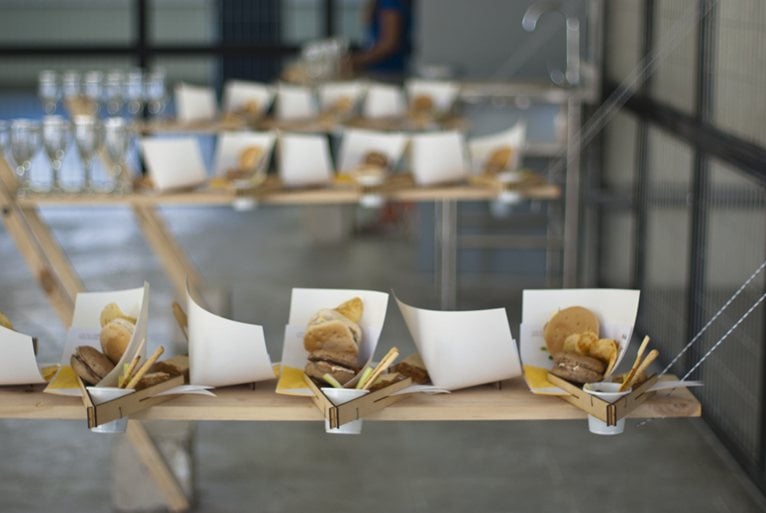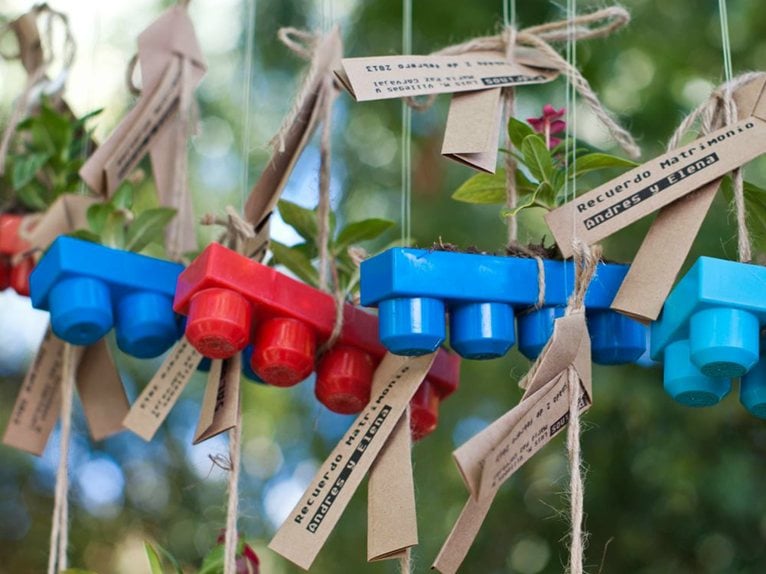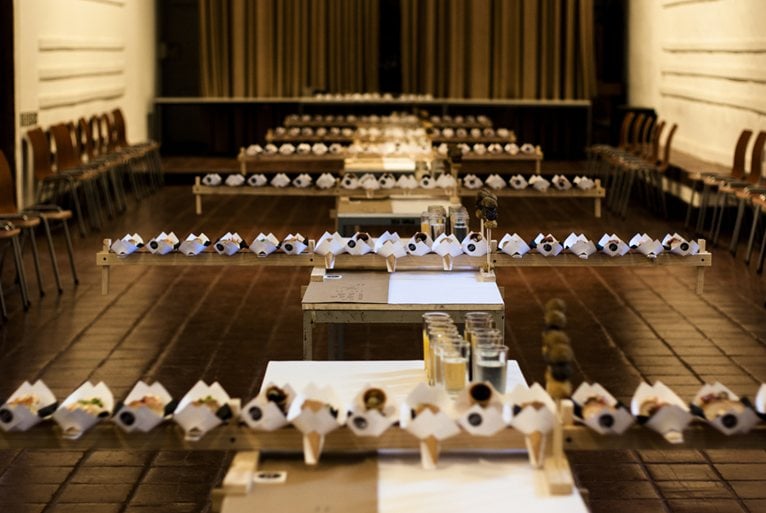
DESIGN&FOOD _ Taking a quick look around the web I found an increasing tendency to develop projects that merge architecture, design and good food.
The first stop of this selection is in a design studio based in Santiago de Chile, called Piqui-Niqui , created by three architects whose objective is to develop new experiences of celebration.
In order to achieve this, they combine spatial interventions with food and origami design. Each project has a particular atmosphere and food choice including all the essential elements for eating: napkins, forks, glasses, and so on.

Mounting all these ingredients, using architectural concepts such as light, structure or disposition, transforms the space and the event into a playful but elegant festivity.
I talked with Daniel Aguayo, founder with Mitsue Kido of the Chilean studio, about the evolution of his creative venture.
How was this project born?
This project was born from the interest in architecture's ability to establish different ways to eat. Traditional food has rigid rules that don’t allow much freedoms and so we wanted to change this situation by inserting new elements like the paper support and ephemeral architecture to change a space and determine new ways to socialize.

Did you have any references to develope the project?
In terms of food, our reference is traditional Chilean food and Mapuche Ingredients (Chilean aborigine culture). Our idea is to bring typical dishes up-to-date. To create supports, we study the place for the installation, and according to its possibilities we create, using as reference the Japanese origami technique.
What is the interaction between architecture and food?
Architecture and food are proposed as a total project, where everything is related. The user participates in an experience which starts when he is entering to the celebration spot and then enjoys the banquet, discovering new possibilities of “playing with food”



Credit Daniel Aguayo


comment